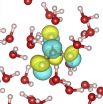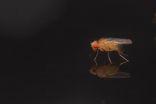INFORMATION:
Other Johns Hopkins investigators involved in the research included Vincent DeMarco, Allison Murawski, Supriya Pokkali, Elizabeth McDonald, Mariah Klunk, Ronnie Mease and Martin Pomper.
The study was funded by the National Institutes of Health Director's New Innovator Award under grant numbers DP2-OD006492 and R01-HL116316, and by subcontract from the Harvard University Center for AIDS Research 5P30AI060354-09.
A real-time tracking system developed to monitor dangerous bacteria inside the body
Approach could improve treatment of drug-resistant infections
2014-10-22
(Press-News.org) Combining a PET scanner with a new chemical tracer that selectively tags specific types of bacteria, Johns Hopkins researchers working with mice report they have devised a way to detect and monitor in real time infections with dangerous Gram-negative bacteria. These increasingly drug-resistant bacteria are responsible for a range of diseases, including fatal pneumonias and various bloodstream or solid-organ infections acquired in and outside the hospital.
"What we have produced is essentially a system that localizes the epicenter of infection and provides real-time tracking of bacterial activity, giving us rapid feedback on how the bacteria respond to antibiotics," says principal investigator Sanjay Jain, M.D., an infectious disease specialist at the Johns Hopkins Children's Center and director of the Center for Inflammation Imaging and Research at Johns Hopkins.
Describing their work in the Oct. 22 issue of the journal Science Translational Medicine, the team says the simplicity, speed and accuracy of the imaging model could change the way dangerous bacterial infections are diagnosed, monitored and treated. Although the work was conducted in mice, the researchers say clinical application in humans could happen quickly, because the system capitalizes on already available imaging devices — PET scans — and materials.
"Our approach could quickly and reliably detect infections caused by certain Gram-negative organisms and could speed up diagnosis and treatment by eliminating days-long waits for lab test results," says study co-author Edward Weinstein, M.D., Ph.D., an infectious disease specialist at the Johns Hopkins University School of Medicine. "Perhaps more importantly, the technique can give us critical insights into the basic mechanisms of disease and can help us evaluate the effect of drug therapy quickly."
The new technique, the researchers say, is superior to current imaging tools because it selectively precision-targets a common class of Gram-negative bacteria known as Enterobacteriaceae that includes notoriously virulent germs such as E. coli, Salmonella, Klebsiella, and dozens of other pathogens that can be particularly dangerous in hospitalized people. Some of the germs in the class, the research team notes, could also be used as biological weapons.
Current imaging tools, such as CT, MRI and PET scans, use inflammation as a surrogate to diagnose and monitor infection, the researchers say. Yet inflammation, which is the body's response to infection rather than infection itself, is not specific to bacteria and cannot distinguish true infections from non-infectious inflammation such as inflammation caused by cancer.
The new model emerged from a creative combination of existing PET scan technology — a sophisticated 3-D visualization system for tumor imaging — with an ingredient commonly used in sugar-free foods known as sorbitol. The model capitalizes on Gram-negative bacteria's fondness for sorbitol, which they readily soak up. By contrast, other classes of bacteria and other microorganisms, cancer, and human cells do not absorb sorbitol. The researchers hypothesized that converting an already available PET imaging tracer into radio-labeled sorbitol would selectively tag and light up clusters of Gram-negative bacteria inside the body. It did.
When researchers injected mice with the Gram-negative bacterium E. coli in one thigh and harmless dead bacteria in the other thigh, both injections produced inflammation. However, only the cluster of live E. coli attracted the radio tracer and lit up the screen — a critical feature that let the researchers distinguish the actual bacterial infection from noninfectious inflammation. When the researchers injected one thigh with Gram-negative E. coli and the other thigh with the Gram-positive bacterium Staphyloccocus aureus, the radio tracer lit up only the thigh infected by the Gram-negative organism. In other words, the sorbitol-containing tracer differentiated between bacterial and sterile inflammation, as well as between infections caused by different classes of bacteria. Next, the researchers compared how their modified tracer fared in distinguishing brain inflammation caused by E. coli from cancer-induced brain inflammation. The tracer reliably and predictably lit up E. coli hot spots in the brain but not brain tumor cells.
When serious drug-resistant infections are suspected, the researchers explain, patients are routinely given broad-spectrum antibiotics while waiting — often for days — for lab tests to determine the specific organism responsible for the infection and which drugs should be used. Broad-spectrum antibiotics treat many bacteria at once, but their frequent and indiscriminate use has fueled drug resistance in recent years, making many pathogens impervious to common antibiotics.
"Using broad-spectrum antibiotics is not unlike firing a cannonball to kill a fly," says study co-author Alvaro Ordonez, M.D., a fellow in pediatric infectious diseases at the Johns Hopkins University School of Medicine. "While such treatment is clinically justified in patients with serious infections of unknown origin, it promotes bacterial resistance, so the long-term price that both patients and clinicians pay is rather steep."
Knowing quickly which organism is causing a patient's infection and which antibiotic can kill the bacteria could seriously lower that cost, Ordonez adds. This is where the new imaging system could play a critical role.
In a separate set of experiments, the investigators showed that their imaging system rapidly captured how bacteria respond to drug treatment in real time. Targeted with the right antibiotic, the dying bacteria produced a visibly and progressively weaker image. By contrast, when bacteria failed to respond to an antibiotic, the strength of the signal remained as intense as ever, heralding treatment failure. Receiving such rapid feedback within hours instead of days could have profound effects on treatment decisions.
"Earlier identification of bacterial drug sensitivity could not only get patients on the mend sooner by giving them the right antibiotic, but in the long run it could save the U.S. health care system billions of dollars in unnecessary drug treatment," Jain says.
ELSE PRESS RELEASES FROM THIS DATE:
NIST's Cloud Computing Roadmap details research requirements and action plans
2014-10-22
The National Institute of Standards and Technology (NIST) has published the final version of the US Government Cloud Computing Technology Roadmap, Volumes I and II. The roadmap focuses on strategic and tactical objectives to support the federal government's accelerated adoption of cloud computing. This final document reflects the input from more than 200 comments on the initial draft received from around the world.
The roadmap leverages the strengths and resources of government, industry, academia and standards development organizations to support technology innovation ...
Finally: A missing link between vitamin D and prostate cancer
2014-10-22
A University of Colorado Cancer Center study recently published in the journal Prostate offers compelling evidence that inflammation may be the link between Vitamin D and prostate cancer. Specifically, the study shows that the gene GDF-15, known to be upregulated by Vitamin D, is notably absent in samples of human prostate cancer driven by inflammation.
"When you take Vitamin D and put it on prostate cancer cells, it inhibits their growth. But it hasn't been proven as an anti-cancer agent. We wanted to understand what genes Vitamin D is turning on or off in prostate cancer ...
New insights on carbonic acid in water
2014-10-22
Though it garners few public headlines, carbonic acid, the hydrated form of carbon dioxide, is critical to both the health of the atmosphere and the human body. However, because it exists for only a fraction of a second before changing into a mix of hydrogen and bicarbonate ions, carbonic acid has remained an enigma. A new study by Berkeley Lab researchers, has yielded valuable new information about carbonic acid with important implications for both geological and biological concerns.
Richard Saykally, a chemist with Berkeley Lab's Chemical Sciences Division and a professor ...
Strengthening thin-film bonds with ultrafast data collection
2014-10-22
When studying extremely fast reactions in ultrathin materials, two measurements are better than one. A new research tool invented by researchers at Lawrence Livermore National Laboratory (LLNL), Johns Hopkins University and the National Institute of Standards and Technology (NIST) captures information about both temperature and crystal structure during extremely fast reactions in thin-film materials.*
The combined device will help scientists study new materials and processes used to make advanced technologies, including state-of-the-art semiconductors and flat-screen ...
Rescued 'abandoned' penguin chicks survival similar to colony rates
2014-10-22
Abandoned penguin chicks that were hand-reared and returned to the wild showed a similar survival rate to their naturally-reared counterparts, according to a study published October 22, 2014 in the open-access journal PLOS ONE by Richard Sherley from University of Cape Town and colleagues.
The Endangered African penguin population has been rapidly decreasing since 2001. In the Western Cape of South Africa, penguins breed from February to September and moult between September and January, once chicks have fledged. If adult penguins begin the moulting process, a 21 day ...
Camera-traps capture wild chimps' nighttime raiding activities
2014-10-22
Wild chimpanzees living in disturbed habitat may use innovative strategies, like foraging crops at night, to coexist with nearby human activities, according to a study published October 22, 2014 in the open-access journal PLOS ONE by Sabrina Krief from Muséum national d'histoire naturelle and colleagues.
People expanding land use for agriculture and other activities are increasingly encroaching on wild chimpanzee habitat. To understand how chimpanzees are adjusting, researchers used camera-traps to observe chimpanzee behavior during incursions out of the forest into ...
Highly effective new anti-cancer drug shows few side effects in mice
2014-10-22
VIDEO:
This video shows treatment with OTS964 induced cytokinetic defect with inter-cellular bridges that eventually led to cell apoptosis. Cell pictures were taken every 10 min.
Click here for more information.
A new drug, known as OTS964, can eradicate aggressive human lung cancers transplanted into mice, according to a report in Science Translational Medicine. The drug, given as a pill or by injection, inhibits the action of a protein that is overproduced by several tumor types, ...
Males of great bustard self-medicate to appear more attractive to females
2014-10-22
Males of great bustard consume small doses of poison with a dual purpose: to eliminate intern parasites and, especially, to look healthier and stronger before females, allowing them to achieve a greater reproductive success. A team of researchers from the Spanish National Research Council has now suggested for the first time that this function of self-medication could be a mechanism of sexual selection. The study results are published in the PLOS ONE journal.
Juan Carlos Alonso, who led the project, CSIC researcher at the Department of Evolutive Ecology of the Spanish ...
Baby cries show evidence of cocaine exposure during pregnancy
2014-10-22
A new study conducted by University of North Carolina School of Medicine researchers provides the first known evidence of how a similar acoustic characteristic in the cry sounds of human infants and rat pups may be used to detect the harmful effects of prenatal cocaine exposure on nervous system development.
"These findings are important because studies of prenatal drug exposure in humans are always limited by not knowing if infant nervous system damage was due to the effects of a specific drug, such as cocaine, or the effects of other associated factors, such as maternal ...
Secret wing colors attract female fruit flies
2014-10-22
Bright colours appear on a fruit fly's transparent wings against a dark background as a result of light refraction. Researchers from Lund University in Sweden have now demonstrated that females choose a mate based on the males' hidden wing colours.
"Our experiment shows that this newly-discovered trait is important in female choice in fruit flies, and is the first evidence that wing interference patterns have a biological signalling function between the sexes during sexual selection", said Jessica Abbott, a biologist at Lund University.
The extremely thin wings of the ...
LAST 30 PRESS RELEASES:
New software sheds light on cancer’s hidden genetic networks
UT Health San Antonio awarded $3 million in CPRIT grants to bolster cancer research and prevention efforts in South Texas
Third symposium spotlights global challenge of new contaminants in China’s fight against pollution
From straw to soil harmony: International team reveals how biochar supercharges carbon-smart farming
Myeloma: How AI is redrawing the map of cancer care
Manhattan E. Charurat, Ph.D., MHS invested as the Homer and Martha Gudelsky Distinguished Professor in Medicine at the University of Maryland School of Medicine
Insilico Medicine’s Pharma.AI Q4 Winter Launch Recap: Revolutionizing drug discovery with cutting-edge AI innovations, accelerating the path to pharmaceutical superintelligence
Nanoplastics have diet-dependent impacts on digestive system health
Brain neuron death occurs throughout life and increases with age, a natural human protein drug may halt neuron death in Alzheimer’s disease
SPIE and CLP announce the recipients of the 2025 Advanced Photonics Young Innovator Award
Lessons from the Caldor Fire’s Christmas Valley ‘Miracle’
Ant societies rose by trading individual protection for collective power
Research reveals how ancient viral DNA shapes early embryonic development
A molecular gatekeeper that controls protein synthesis
New ‘cloaking device’ concept to shield sensitive tech from magnetic fields
Researchers show impact of mountain building and climate change on alpine biodiversity
Study models the transition from Neanderthals to modern humans in Europe
University of Phoenix College of Doctoral Studies releases white paper on AI-driven skilling to reduce burnout and restore worker autonomy
AIs fail at the game of visual “telephone”
The levers for a sustainable food system
Potential changes in US homelessness by ending federal support for housing first programs
Vulnerability of large language models to prompt injection when providing medical advice
Researchers develop new system for high-energy-density, long-life, multi-electron transfer bromine-based flow batteries
Ending federal support for housing first programs could increase U.S. homelessness by 5% in one year, new JAMA study finds
New research uncovers molecular ‘safety switch’ shielding cancers from immune attack
Bacteria resisting viral infection can still sink carbon to ocean floor
Younger biological age may increase depression risk in older women during COVID-19
Bharat Innovates 2026 National Basecamp Showcases India’s Most Promising Deep-Tech Ventures
Here’s what determines whether your income level rises or falls
SCIE indexation achievement: Celebrate with Space: Science & Technology
[Press-News.org] A real-time tracking system developed to monitor dangerous bacteria inside the bodyApproach could improve treatment of drug-resistant infections




